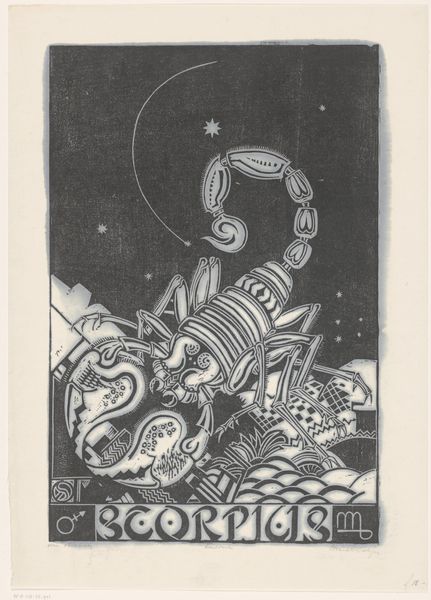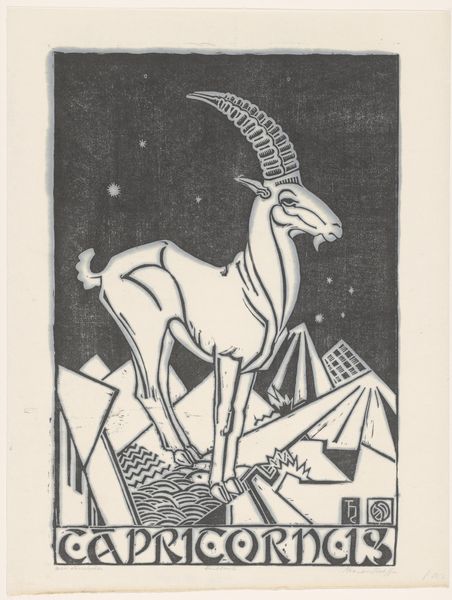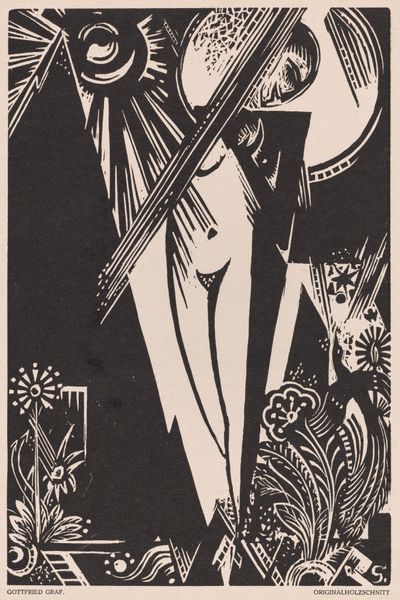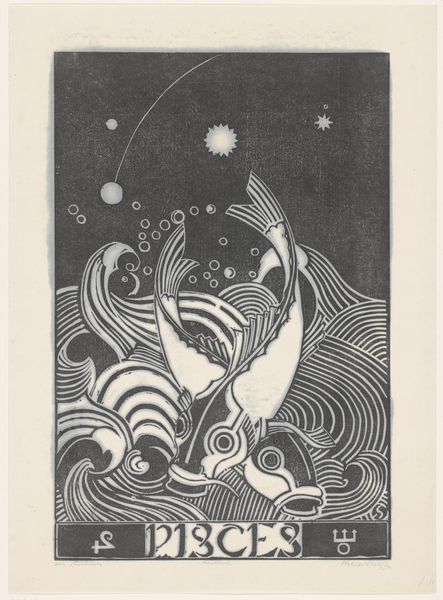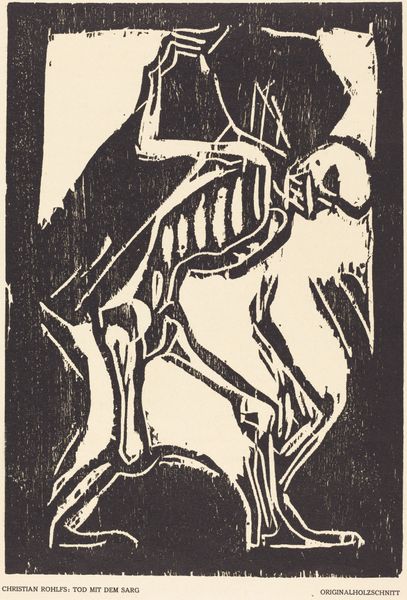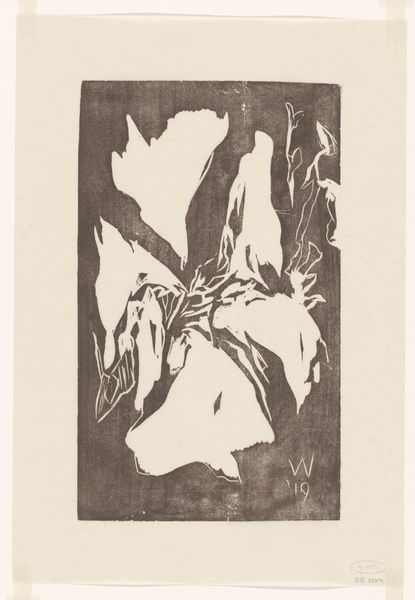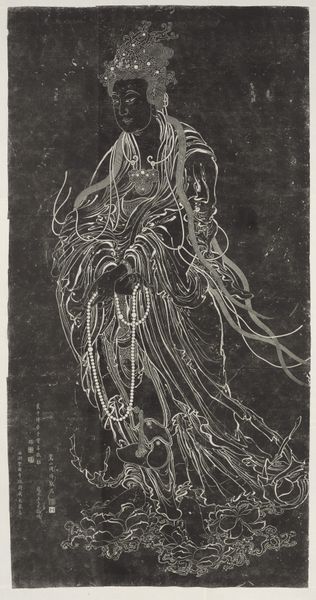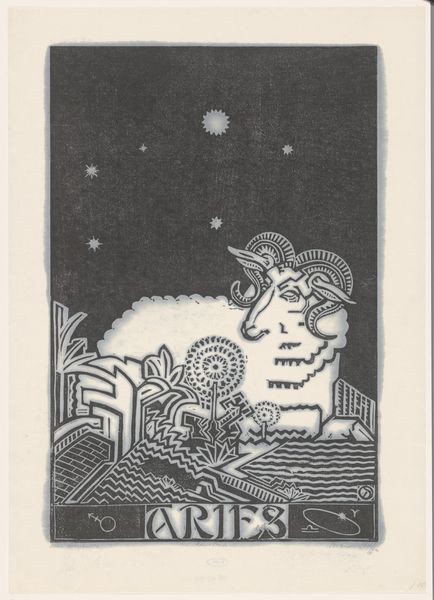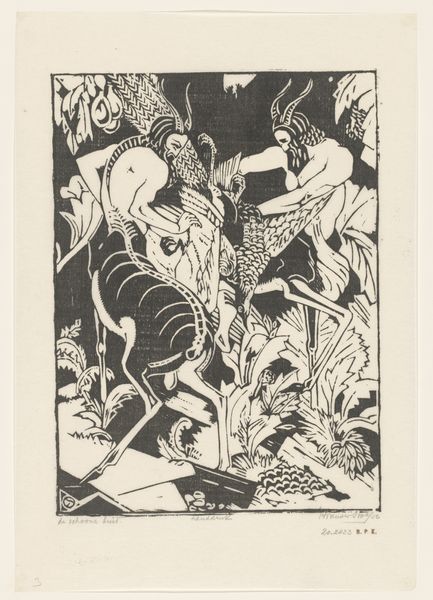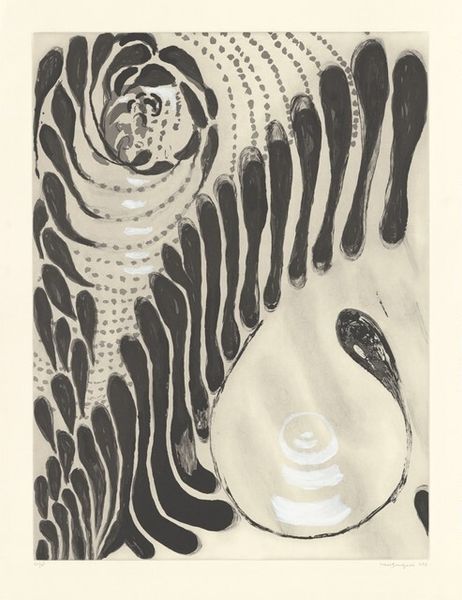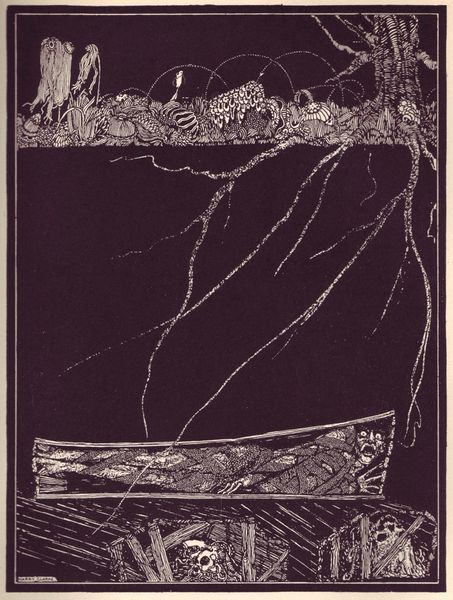
graphic-art, print, woodcut, engraving
#
graphic-art
# print
#
pen illustration
#
figuration
#
woodcut
#
line
#
symbolism
#
engraving
Dimensions: height 572 mm, width 408 mm
Copyright: Rijks Museum: Open Domain
Editor: This print, "Sterrenbeeld Kreeft," meaning "Constellation Cancer," by Henri van der Stok, likely created sometime between 1880 and 1946, showcases a wonderfully stylized crab. Its monochrome palette emphasizes a rigid sense of structure, yet its intricate lines suggest something more fluid, almost organic. What strikes you most about the formal qualities of this piece? Curator: The emphasis on line is paramount. Observe how van der Stok uses varied line weights, strategically deployed to create areas of both dense shadow and stark contrast. This enhances the two-dimensionality of the picture plane while simultaneously creating the illusion of depth and texture within the crab's form and its surrounding environment. Consider the formal implications of this deliberate flattening of space. Editor: It’s like he's using line to build the crab, almost like an architect uses lines in a blueprint. How do you read the symbolic nature of its forms and the way they contrast? Curator: Precisely. And within that formal language, we find meaning. Note the juxtaposition of organic and geometric shapes: the naturally curving antennae versus the sharp, angular rocks below. This interplay speaks to a fundamental duality – perhaps that between instinct and intellect, or the chaotic nature versus constructed order, rendered through formal visual means. The crab, meticulously rendered, contrasts the simple starlight. It appears self-contained. What meaning can you derive from these contrasts? Editor: So the sharp angles imply the crab’s defense, but also confinement, contrasting with the freedom implied by the stars. It is fascinating to consider form dictating our symbolic interpretation. Curator: Indeed. And from its title we can relate that back to the viewer's role and reading within a system: that the work asks how external influences inform and construct self-understanding. Editor: That’s a different, refreshing way of looking at the piece. I hadn't thought about reading myself through the artwork. Curator: The dialogue between form and meaning continues, enriched by your insights.
Comments
No comments
Be the first to comment and join the conversation on the ultimate creative platform.
